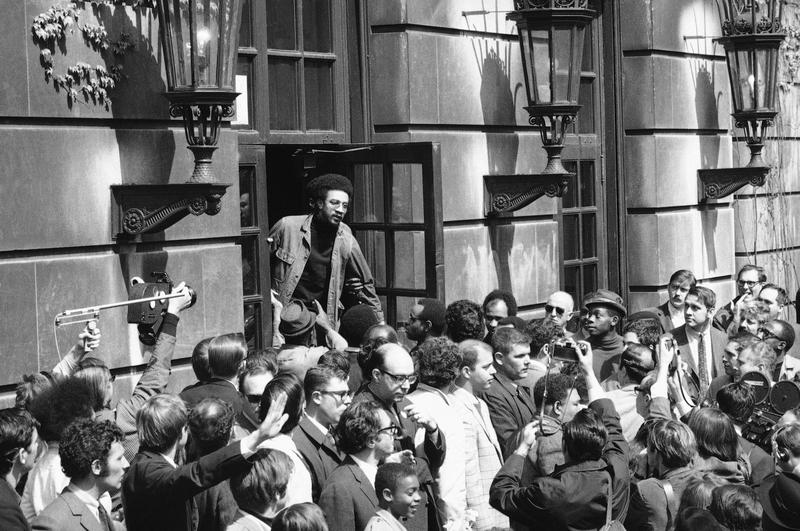
Fifty years ago this week, student protesters threw Columbia University into turmoil. Hundreds of students took over several campus buildings in protest of the university's proposed construction of a gymnasium in a public park and its links to the Vietnam War. The students refused to leave until the university agreed to their demands.
By the time the protests came to a close, more than 700 students had been arrested.
"We were a generation of people who watched on TV the napalming, the aerial chemical bombardment of civilians," said Nancy Biberman, who took part in the April 1968 protests as a member of Students for a Democratic Society. "[It] was grotesque, it was outrageous, and it enraged young idealistic students who thought that our government shouldn't be behaving in this way."
The protests were organized by the SDS and the Students' Afro-American Society, which was strongly opposed to the proposed gymnasium in Morningside Park in Harlem.
"Black students were occupying Hamilton Hall, adjacent to Harlem, which had just exploded in response a few weeks earlier to Dr. King's slaying," said Raymond Brown, a prominent student organizer with the SAS at Columbia University.
Because of the proximity to Dr. Martin Luther King's death, Brown said, city and university officials were cautious about how to deal with the protesters.
"So it lasted longer than most comparable demonstrations," Brown told WNYC's Jami Floyd.
Despite their unifying passions, Brown said there were large rifts between African-American students and white students when it came to their demonstration strategy. According to Biberman, women were also sidelined in the decision making process and excluded from leadership positions among the organizers.
Half a century later, Brown said he sees their action as one chapter in an ongoing lineage of political resistance.
"We're contemplating possibilities now that we wouldn't have thought about generations ago," Brown said. "On the other hand, the struggles continue."
The accounts of Brown, Biberman and other students can be found in the book "A Time To Stir, Columbia '68."
This segment is part of a series from WNYC called 1968: 50 Years Later.
